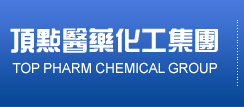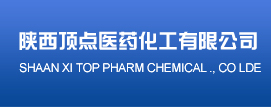Gentamicin Sulphate
|
Item
|
Standard
|
Test Results
|
|
Appearance
|
White or almost white, hygroscopic powder.
|
Complies
|
|
Solubility
|
Freely soluble in water, practically insoluble in alcohol.
|
Complies
|
|
Identification
First identification
C, D.
Second identification
A, B, D.
|
A.Examined between 240 nm and 330 nm,
the solution shows no absorption maximum.
|
Complies
|
|
|
B. Thin-layer chromatography.
|
Complies
|
|
|
C. Examine the chromatograms obtained in the test for composition.
|
Complies
|
|
|
D. It gives reaction (a) of sulphates.
|
Complies
|
|
Appearance of solution
|
Solution S is clear and not more intensely coloured than intensity 6 of the
range of reference solutions of the most appropriate colour
|
Complies
|
|
pH
|
3.5 to 5.5 in solution (1 in 25)
|
4.8
|
|
Specific optical rotation
|
+ 107 to + 121 (anhydrous substance).
|
+119
|
|
Composition
|
Gentamicin C1
|
25.0%~40.0%
|
30.1%
|
|
|
Gentamicin C1a
|
10.0%~30.0%
|
22.4%
|
|
|
Sum of gentamicins C2+C2a+C2b:
|
35.0%~55.0%
|
49.5%
|
|
Related substances
|
Impurity A(Sisomicin);≤3.0%
|
Below Disregard Limit
|
|
|
Impurity B(Garamine):≤3.0%
|
0.7%
|
|
|
Any impurity: ≤3.0%
|
0.8%
|
|
|
Total: ≤10.0%
|
4.2%
|
|
Methanol
|
≤1.0%
|
No Use in Production
|
|
Sulphate
|
32.0%~35.0%(Anhydrous Substance)
|
33.5%
|
|
Water
|
≤15.0%, determined on 0.300 g.
|
5.5%
|
|
Sulphated ash
|
≤1.0%, determined on 0.50 g.
|
0.09%
|
|
Bacterial endotoxins
|
<0.71IU/mg
|
<0.05%
|
|
Sterility
|
Conforms to the test for sterility
|
Complies
|
|
Assay
|
≥590 IU/mg (anhydrous substance).
|
673IU/mg
|
|
Microbial Limit
|
|
Total Aerobic
Microbial Count
|
≤100CFU/G
|
0 CFU/g
|
|
Total Yeast&
Mold Count
|
≤10 CFU/G
|
0 CFU/g
|
|
Conclusion
|
|
|
The batch conforms to the EP 8.0&USP37&BP2012 standard
|
|
|
|
Gentamicin, sold under the brandname Garamycin among other, is an antibiotic
used to treat many types of bacterial infections.This may includes bone infections,
endocarditis, pelvic inflammatory disease, meningitis, pneumonia, urinary tract
infections, and sepsis among others. It is not effective for gonorrhea or chlamydia
infections. It can be given intravenously, by injection into a muscle, or topically.
Topical formulations may be used in burns or for infections of the outside of the eye.
In the developed world it is often only used for two days until bacterial cultures
determine what antibiotics the infection is sensitive to.
The dose required should be monitored by blood testing.
Gentamicin can cause inner ear problems and kidney problems.
The inner ear problems can include problems with balance and
problems with hearing. These problems may be permanent.
If used during pregnancy it can cause harm to the baby.
It appears to be safe for use during breastfeeding.
Gentamicin is a type of aminoglycoside. It works by stopping the
bacteria from making protein which typically kills the bacteria.
Gentamicin was discovered in 1963.It is made from the bacteria Micromonospora purpurea.Gentamicin is on the World Health Organization's List of Essential Medicines, the most important medication needed in a basic health system.It is available as a generic medication.It wholesale cost is between 0.05 and 0.58 USD per day.
Medical uses
Active against a wide range of bacterial infections, mostly Gram-negative
bacteria including Pseudomonas, Proteus, Serratia, and the Gram-positive
Staphylococcus.Gentamicin is not used for Neisseria gonorrhoeae, Neisseria
meningitidis or Legionella pneumophila bacterial infections (because of the risk
of the person going into shock from lipid A endotoxin found in certain Gram-negative
organisms).Gentamicin is also useful against Yersinia pestis, its relatives, and Francisella
tularensis (the organism responsible for tularemia seen often in hunters and/or trappers).
Some Enterobacteriaceae, Pseudomonas spp., enterococci, Staphylococcus aureus and other staphylococci are resistant to gentamicin sulfate, to varying degrees.
|







